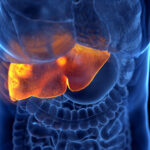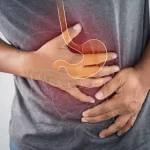Recognizing the Symptoms of Liver Damage from Alcohol
In this article regarding the symptoms of liver damage from alcohol, it is important to understand that alcoholic liver disease arises when excessive alcohol consumption damages the liver, leading to a range of issues including fat accumulation, inflammation, and scarring.
Our liver, a marvel of complexity within our bodies, handles over 500 tasks crucial to our health. Among these are purifying our blood by removing toxins, storing energy for when we need it, crafting essential hormones and proteins, and managing our cholesterol and blood sugar levels.
In 2015, a significant 16.5% of liver transplants in the United States were necessitated by alcoholic liver disease, marking it as the third most common reason for such procedures, trailing only chronic hepatitis C and liver cancer.
The Centers for Disease Control and Prevention (CDC) reports that in 2020 alone, the U.S. saw 29,505 deaths attributed to alcoholic liver disease.
Moreover, chronic liver disease and cirrhosis, of which alcoholic liver disease is a major contributor, account for an estimated 12 fatalities per 100,000 individuals annually.
This article delves into the early indicators and symptoms of alcoholic liver disease, its progression through stages, the factors contributing to its development, the risks involved, available treatments, and strategies for prevention.
SEE ALSO: Symptoms and Signs of Prostrate Cancer
The liver is a powerhouse organ, silently filtering toxins from your blood, producing essential proteins, and regulating numerous bodily functions. However, excessive alcohol consumption can take a heavy toll on this vital organ, leading to a spectrum of liver damage known as Alcohol-Related Liver Disease (ARLD).
The early stages of ARLD often progress with minimal or no symptoms. This can be particularly concerning because timely intervention is crucial for preventing irreversible damage.
This article sheds light on the potential symptoms of liver damage from alcohol, empowering you to recognize the warning signs your body might be sending.
Understanding the Impact of Alcohol on the Liver
The liver is remarkably resilient, capable of processing and eliminating alcohol from the bloodstream. However, chronic heavy drinking overwhelms this process, leading to a buildup of toxins and fat deposits within the liver. Over time, this can cause inflammation, scarring (cirrhosis), and eventually, liver failure.
Understanding Alcoholic Liver Disease
The liver is a remarkable organ, silently working in the background to detoxify your body, produce essential proteins, and keep you functioning smoothly. However, excessive alcohol consumption can take a heavy toll, leading to a progressive condition known as Alcoholic Liver Disease (ALD).
ALD is a sneaky opponent, often progressing through distinct stages without causing any noticeable symptoms in the early phases. This article sheds light on the different stages of ALD and the subtle signs that might indicate trouble brewing beneath the surface.
The Four Stages of ALD: A Gradual Assault
ALD progresses through four main stages, each representing a worsening of liver damage:
- Alcoholic Fatty Liver Disease: This is the earliest stage, where excessive alcohol consumption leads to a buildup of fatty acids within the liver cells. The good news? This stage is often reversible if you stop drinking alcohol altogether.
- Alcoholic Hepatitis: Continued heavy drinking can cause inflammation of the liver, leading to alcoholic hepatitis. Symptoms in this stage can be vague, including fatigue, nausea, and abdominal pain. If alcohol consumption is not curbed, the damage can progress.
- Fibrosis: As the liver tries to repair itself from ongoing damage, scar tissue begins to form, a process known as fibrosis. At this stage, some permanent damage might have already occurred, but depending on the severity, there might still be some room for improvement with abstinence from alcohol.
- Cirrhosis: This is the most advanced and irreversible stage of ALD. Healthy liver tissue is extensively replaced by scar tissue, significantly compromising liver function. Symptoms at this stage become more pronounced and can include jaundice (yellowing of the skin and eyes), fatigue, and fluid buildup in the abdomen.
Early Warning Signs: Don’t Ignore the Subtle Cues
The early stages of ALD are often deceptive. Symptoms can be vague and easily dismissed as a hangover, general fatigue, or a stomach bug. Here’s what to watch out for:
- General Feeling of Discomfort: You might experience a vague feeling of uneasiness or pain in the upper right abdomen, where the liver is located.
- Fatigue and Loss of Appetite: Feeling unusually tired and lacking interest in food can be early signs of trouble.
- Nausea and Vomiting: Persistent nausea and vomiting can indicate digestive issues caused by a stressed liver.
The Importance of Early Detection
While the early symptoms might be subtle, it’s crucial not to ignore them, especially if you’re a heavy drinker. Early detection allows for intervention and potential reversal of damage in the initial stages. Schedule an appointment with your doctor if you experience any of these warning signs.
By understanding the different stages of ALD and recognizing the early warning signs, you can take charge of your liver health. Remember, your liver is a resilient organ, but it can only take so much abuse.
Responsible alcohol consumption and seeking medical advice at the first sign of trouble are essential steps towards a healthy liver and a healthy you.

Symptoms of Liver Damage from Alcohol: A Spectrum of Warning Signs
While the early stages of ARLD might be symptomless, as the disease progresses, you might experience some of the following:
- Fatigue and Loss of Appetite: Feeling unusually tired and lacking interest in food can be early signs of liver damage.
- Nausea and Vomiting: Persistent nausea and vomiting can indicate digestive issues caused by a malfunctioning liver.
- Abdominal Pain or Swelling: Pain or a feeling of fullness in the upper right abdomen, where the liver is located, can be a cause for concern. Swelling in the abdomen (ascites) due to fluid buildup is another potential symptom.
- Changes in Skin and Eyes: Jaundice, a yellowing of the skin and whites of the eyes, is a telltale sign of liver dysfunction. Development of spider-like veins on the skin, particularly around the shoulders and upper chest, can also occur.
- Dark Urine and Pale Stools: Changes in urine and stool color can indicate problems with bile production and elimination, a function of the liver.
- Mental Confusion: In severe cases, accumulation of toxins in the bloodstream can lead to confusion, drowsiness, and even coma.
It’s important to remember that these symptoms can also be caused by other conditions. However, if you experience any of these, especially if you have a history of heavy drinking, it’s crucial to schedule an appointment with your doctor for a proper diagnosis.
Alcoholic Liver Diseases
Alcoholic hepatitis
Alcoholic hepatitis is a severe form of liver damage caused by excessive alcohol consumption. Hepatitis refers to the liver’s inflammation and swelling due to various factors.
Continued alcohol intake exacerbates liver inflammation, whether it’s over many years of heavy drinking or during episodes of binge drinking.
Common symptoms of alcoholic hepatitis include:
- Jaundice, evident by a yellowish tint in the eyes and skin.
- Enlargement of the liver, medically termed as hepatomegaly.
- Manifestations of systemic inflammation, such as:
-
- Body temperature deviations below 96.8°F (36°C) or above 100.4°F (38°C).
- Elevated heart rate surpassing 90 beats per minute.
- Respiratory rate exceeding 20 breaths per minute.
- Abnormal white blood cell count, either above 12,000 or below 4,000 per microliter.
If alcohol consumption persists, alcoholic hepatitis often progresses to cirrhosis. While hepatitis can heal if alcohol is discontinued, cirrhosis damage is irreversible.
Fibrosis
Fibrosis, the accumulation of certain proteins like collagen in the liver, is a hallmark of chronic liver diseases. Doctors assess fibrosis severity using the Metavir scoring system, rating both activity (A0–A3) and extent (F0–F4). While milder fibrosis stages may be reversible, advanced stages like cirrhosis are irreversible.
Cirrhosis
Cirrhosis results from prolonged liver inflammation, leading to scarring and impaired function. It’s a serious, life-threatening condition, but further damage can be prevented by abstaining from alcohol. Lifelong abstinence may improve liver function, although severe cases might necessitate a liver transplant for survival.
As liver function declines, late-stage signs of liver disease become more apparent:
- Swelling in the lower limbs (edema).
- Accumulation of fluid in the abdomen (ascites).
- Fever, chills, and extreme itchiness.
- Clubbing of fingernails.
- Significant weight loss, weakness, and muscle wasting.
- Gastrointestinal bleeding, indicated by blood in vomit or stools.
- Increased susceptibility to bleeding and bruising, as well as heightened sensitivity to alcohol and medications.
Multiple factors contribute to the risk of alcoholic liver disease, including alcohol type, gender, obesity, hepatitis C infection, and genetic predispositions.
Treatment
Treatment focuses primarily on alcohol cessation, which can reverse early liver damage. Medical support is crucial for safe alcohol withdrawal, as abrupt cessation can be life-threatening. Therapy, lifestyle changes, medications, and, in severe cases, liver transplantation may also be necessary.
Prevention
Prevention entails adhering to moderate drinking guidelines and avoiding binge drinking. Lifestyle modifications such as quitting smoking and maintaining a healthy weight can further reduce risk.
The outlook for individuals with alcoholic liver disease varies depending on disease severity and adherence to treatment and lifestyle changes. Lifespan significantly decreases with disease progression, but abstinence from alcohol and healthy habits can improve outcomes and prolong life.
Early Detection is Key: Safeguarding Your Liver Health
The good news? ARLD is often reversible in its early stages if you stop drinking alcohol completely. Early detection is paramount to preventing irreversible damage and ensuring timely treatment options. Here are some steps you can take:
- Maintain Open Communication with Your Doctor: Be honest about your alcohol consumption and discuss any concerning symptoms you might be experiencing.
- Regular Checkups and Blood Tests: Schedule regular checkups with your doctor and consider blood tests to monitor your liver function.
- Embrace a Healthy Lifestyle: A balanced diet, regular exercise, and maintaining a healthy weight can all contribute to your overall liver health.
Taking Charge of Your Health
By recognizing the symptoms of liver damage from alcohol and prioritizing early detection, you can safeguard your liver health. Remember, your liver is a vital organ, and taking steps to protect it is an investment in your overall well-being.
If you’re concerned about your alcohol consumption or suspect liver damage, don’t hesitate to seek medical advice. Early intervention can make a significant difference in your health outcomes.

A graduate of Computer Science and Information Management Technology. Diploma – Caregiving, Certificates – Dementia and Diabetes Awareness and Management. A researcher, blogger, songwriter, singer and acoustic guitarist. Born in an environment where natural talents such as healing are imparted at our natural birth. This natural talents of healing is the result of our genetic inheritance and the training from family environment.













